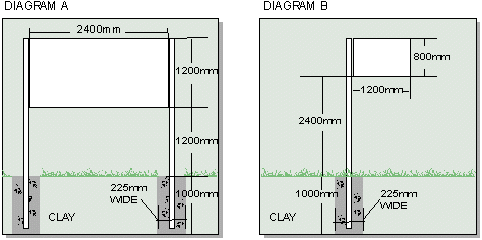| ITEM: WINDLOAD GUIDE SIGN ONE 80mm ( 3
1/4") DESCRIPTION: This technical sheet aims to provide a guide for windloads. Due to the almost unlimited size and height from the base of the sign face to the ground, creating a technical sheet to cover all options is not practical. We therefore sought an engineer’s opinion for two scenarios. Many sign contractors have installed considerable larger signs than those specified, we therefore suggest testing our industry knowledge is also a good guide. ENGINEERS SPECIFICATIONS: Should be sought to ensure the size and method of the sign you have designed and to establish the suitability of its use prior to manufacture and installation. We have calculated that the following sign types and sizes are structurally adequate as per the requirements of AS1170 Part 2 "Wind Loads" for region A Terrain Category 3 areas, constructed in 6106 T6 Aluminium.
Both of the above footing systems entail setting the posts 600mm ( 2' ) minimum into concrete. BASE PLATE GUIDELINES: To utilise the standard base plate with 4-M10 chemical anchors at 1100mm ( 3 1/2") centres, the total wind area on each post cannot exceed 1.0 metre ( 3' ) square with a centre of load 1.5 metres ( 4' 7 1/2") above the base plate.
|
